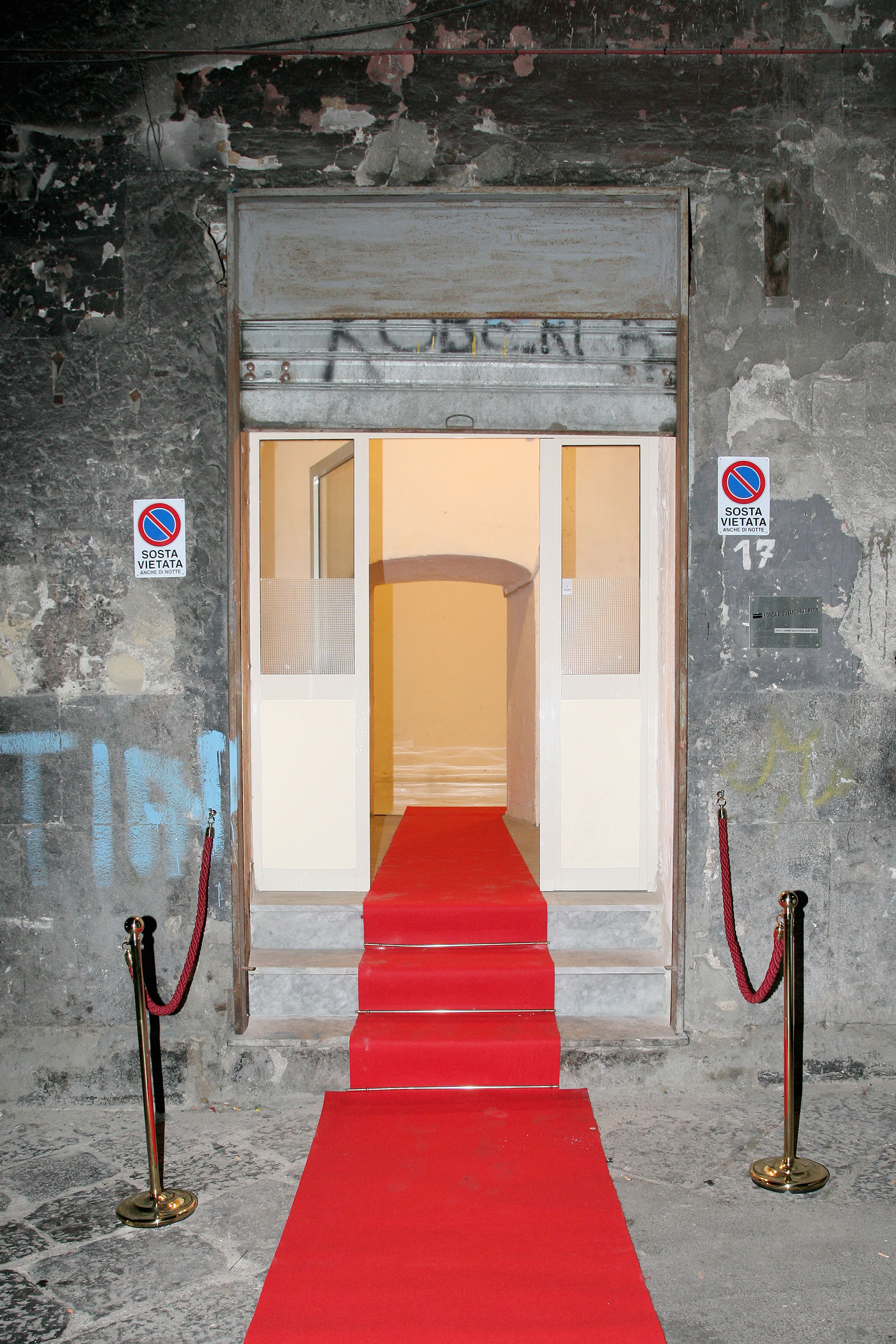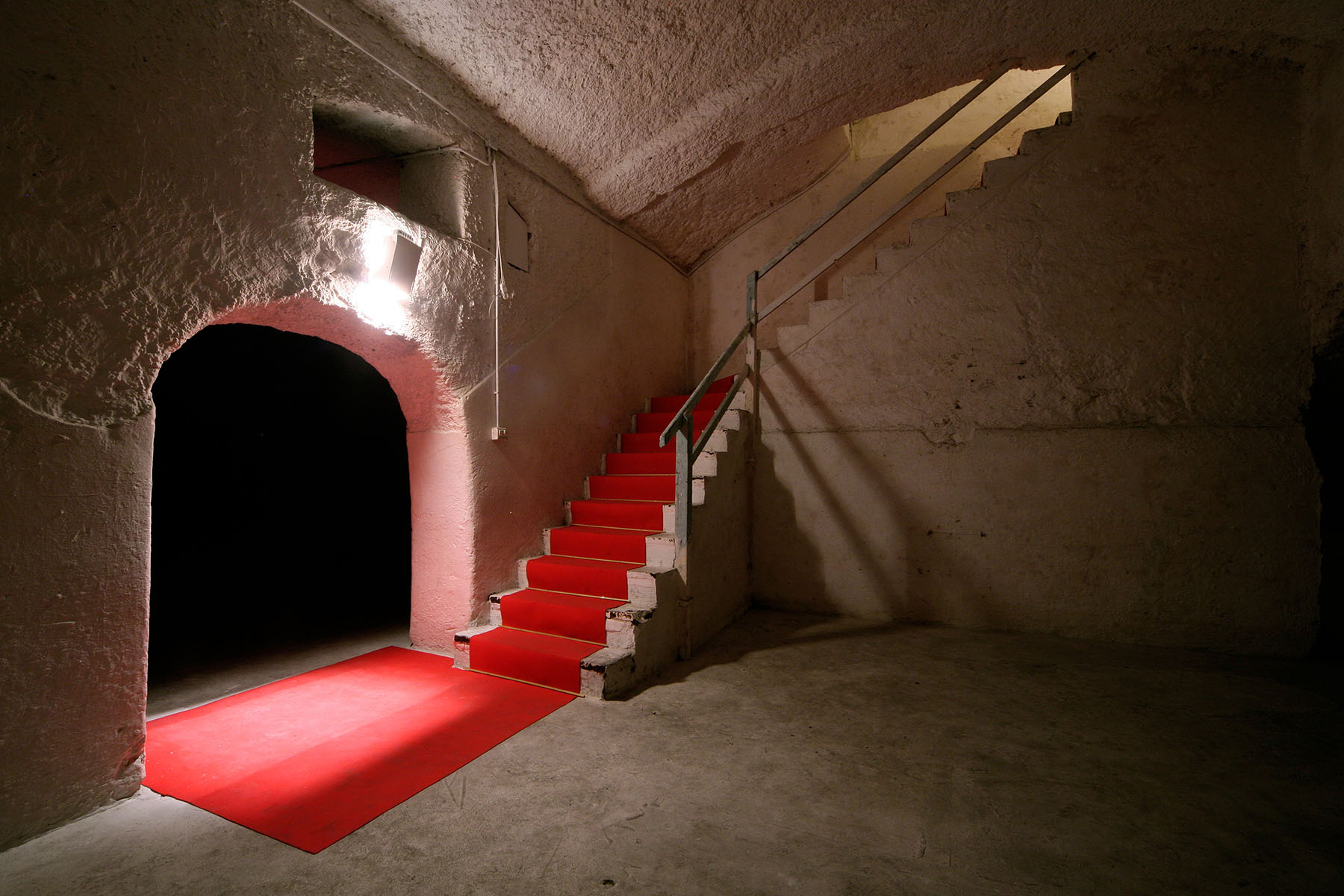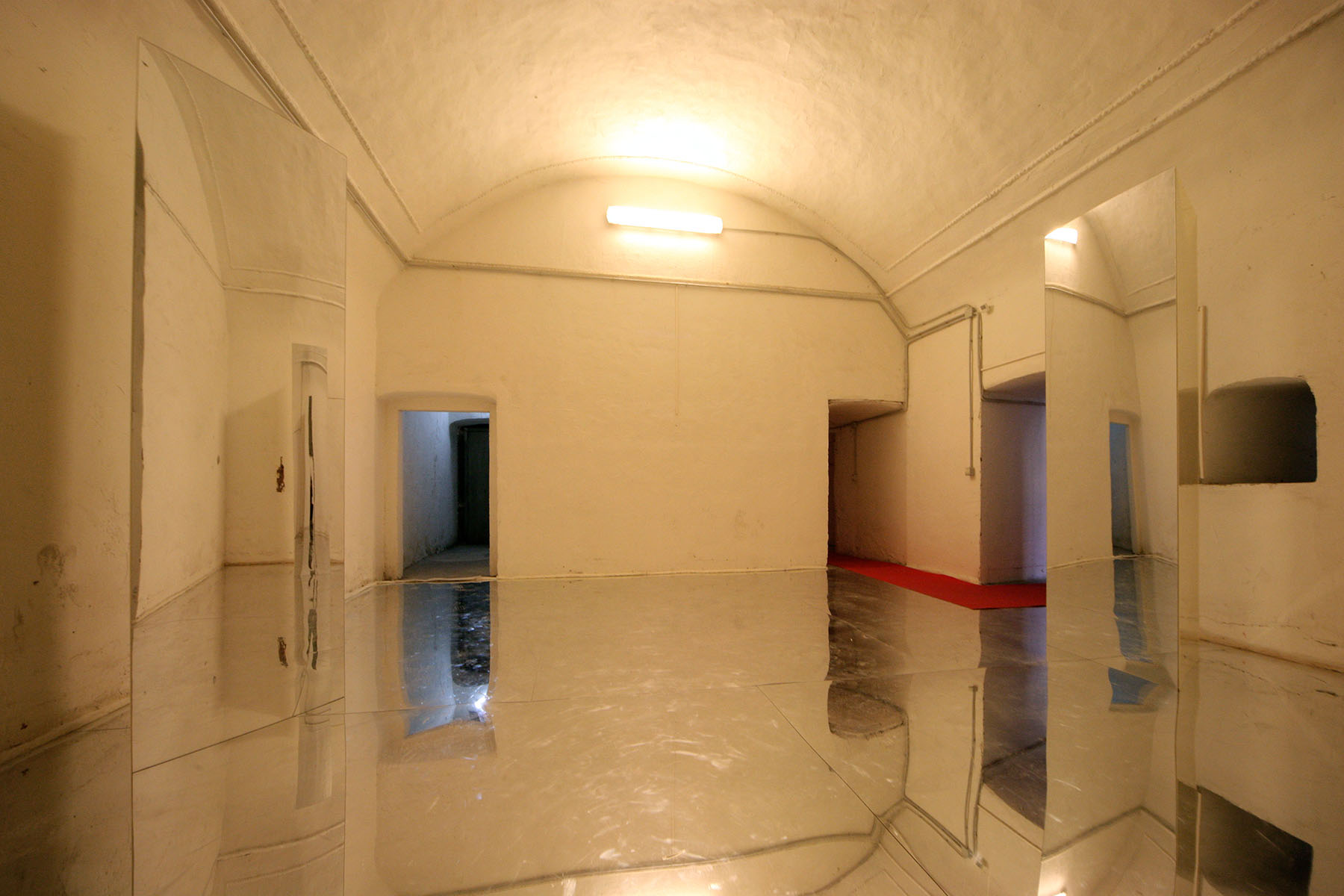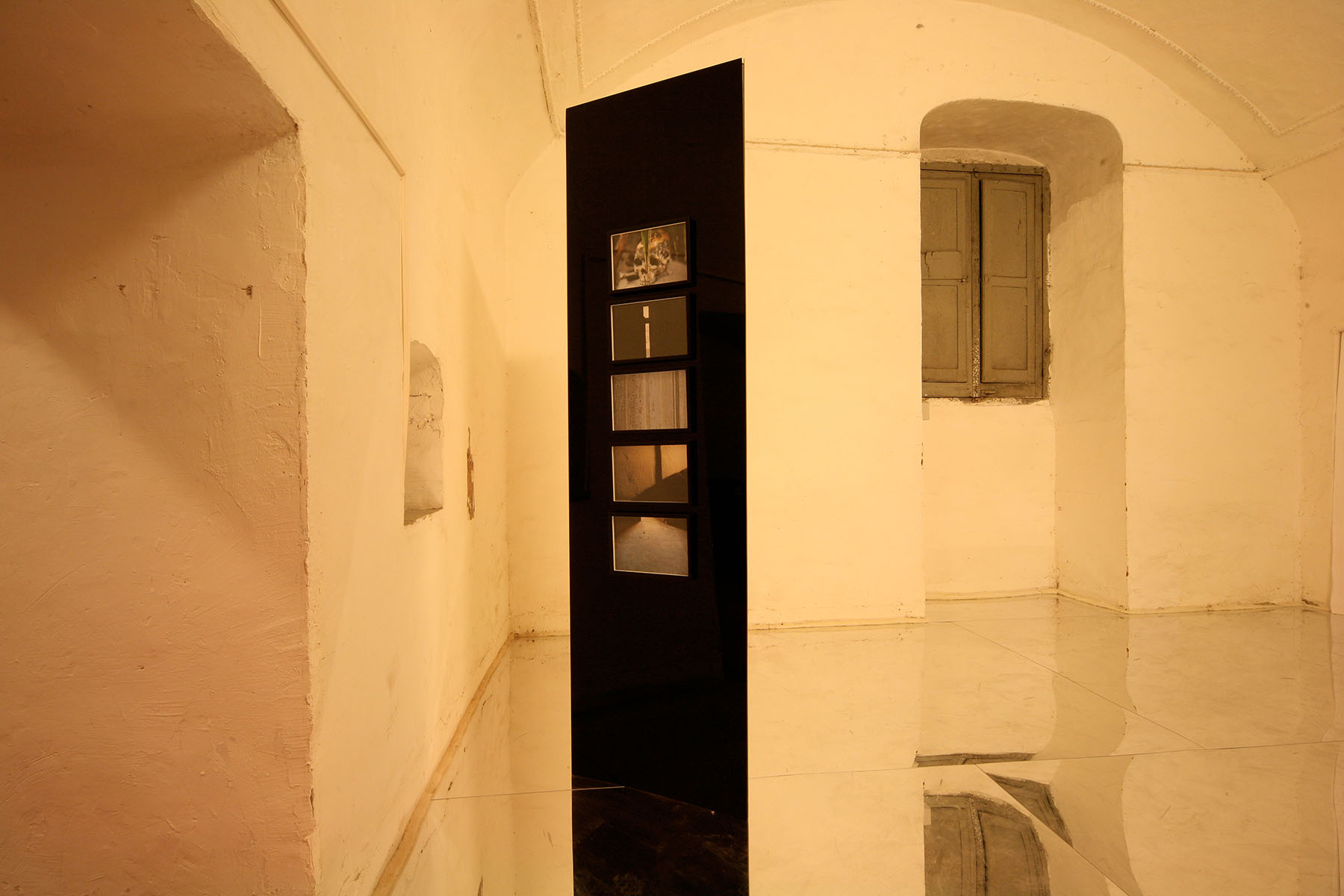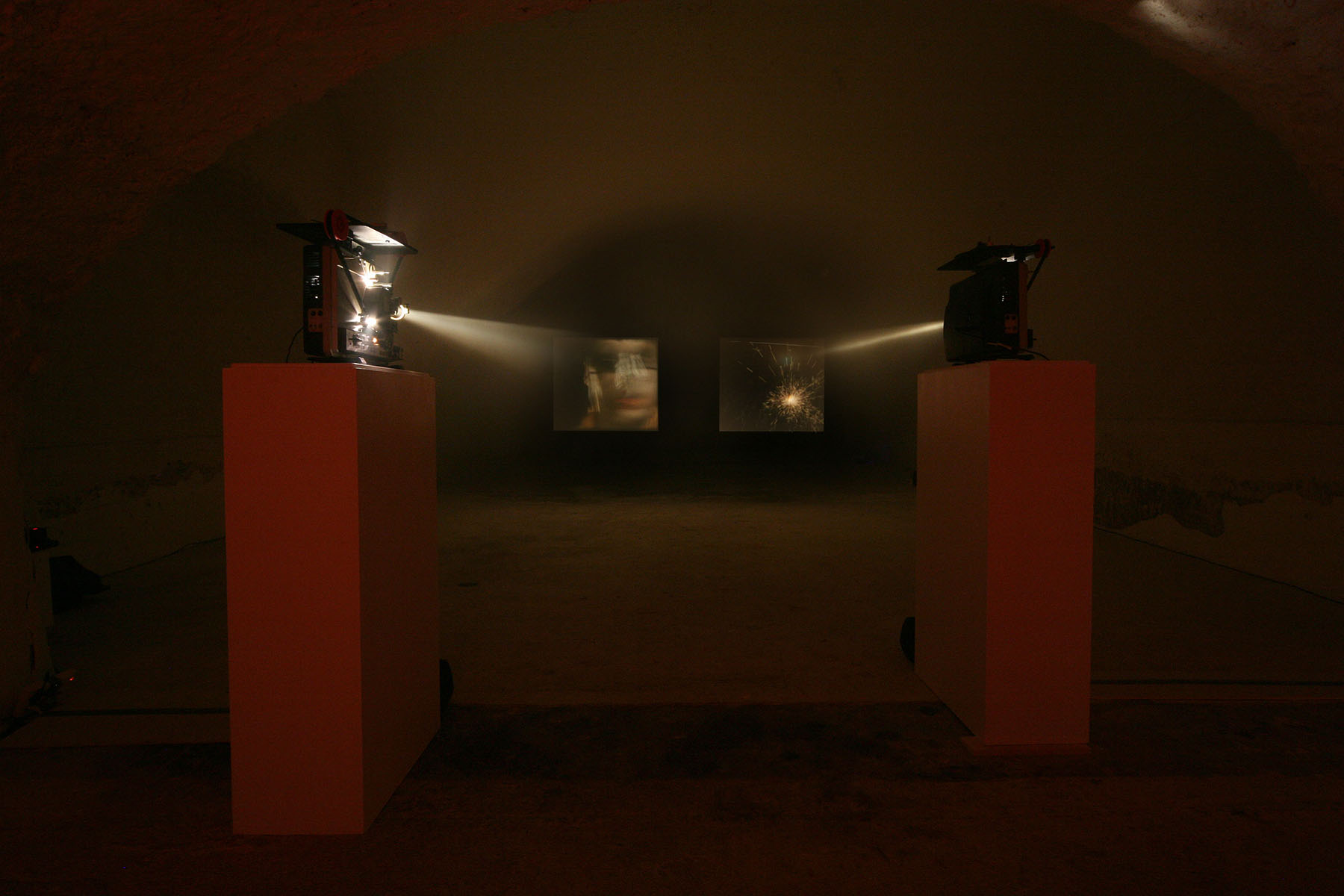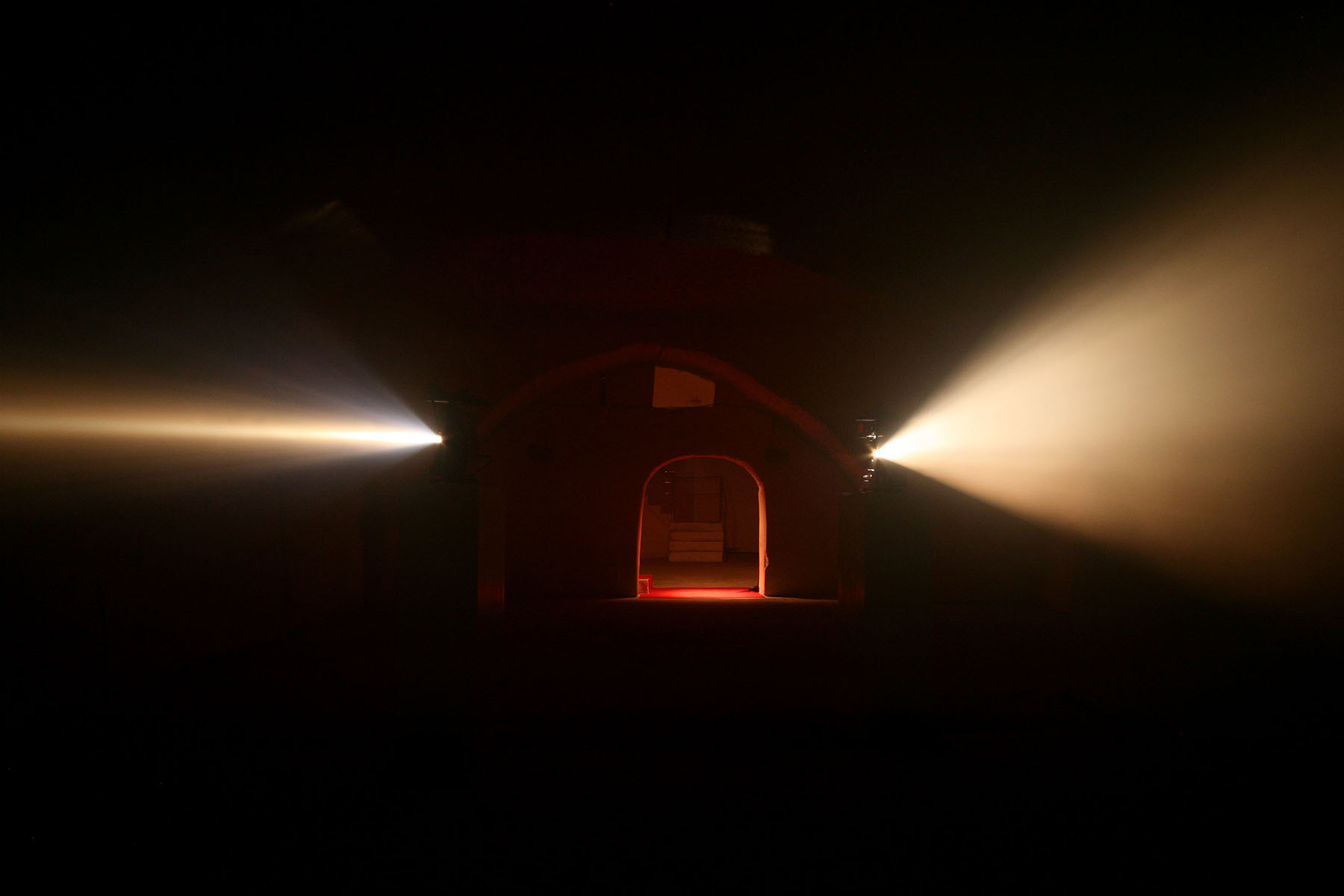30.10.2009 \\ 26.02.2010
At the base of the work of German Susanne M. Winterling (Rehau, Germany, 1971), there is a need to develop, as she stated in a recent interview, impossible autobiographies, which in the centre places the artist’s life and his double and changeable personality. She combines it and dissolves it with figures and evocations that can develop a parallel path of understanding and analysis of the figure of the artist herself. In the past, she has confronted us with different characters, unconventional female icons of the beginning of last century, such as: Isadora Duncan, Annemarie Schwarzenbach, the Marchesa Casati and Eileen Gray – the last one inspired the core installation at Neunationalegalerie Mies Van Der Rohe, at the last Berlin Biennale. Such an approach expresses certainly humanistic nature, a consequence of studies in philosophy and art history at the University of Tubingen, that brought Winterling to a continuous attempt in analysing the reflected image, in which the vision of the mirror is the key for reading and understanding the mutability and fluidity of the different aspects of a personality.
But it is not only the woman with whom Susanne Winterling confronts us: in the project for Fondazione Morra Greco, the figure of Torquato Tasso is the engine that starts the work and reflection of the artist in relation to an idea that assimilates the concept of space with the one of an identity. But this has a reason: many of Torquato Tasso’s protagonists were interpreted on stage by androgynous women (for example Isabella Andreini who played in Aminta). Another question raised by the artist referring to Torquato Tasso is the artist’s autonomy and its problematic. The concept may be interpreted by the contemporary figure of Joker. For the artist this association culminates in the sound of a storm.
The poet Torquato Tasso is also known for making a dialectic equivalence between love and melancholy. A peculiarity that leads to the field of interest and poetic action around which Winterling develops the artistic process and the intellectual definition of her work. Through 16mm film installation, a floor mirror, a series of photographs and a long red carpet (the reference to the cinematographic red carpet is evident) that will slip down from the ground floor into the basement of the Foundation. In reference to another architectural feature of the building: its special hidden passage for the servants, now turned into the glamour carpet for the film stars. The artist designs a possible scenario, starting from historical elements linked to the figure of Torquato Tasso, and more specifically to the years when he lived in Palazzo Caracciolo d’Avellino, nowadays the headquarters of Fondazione Morra Greco.
The Portrait of the Artist as Torquato Tasso & the Stairs for the Servants is the title of the exhibition, in which Winterling proposes her particular vision of literary characters by the reading of which it is possible, in a sense, to draw an identikit of the artist as such, and suggest that in the subjective characteristics of the person there are structured some objective factors which are detached from the biography, in favour of the art and the work itself and its formal aspects, which interrelate to its content.
All images Courtesy Fondazione Morra Greco, Napoli
© Danilo Donzelli

